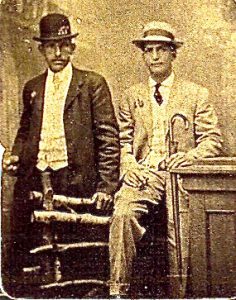There are certain items we possess that have more than just monetary value, and sometimes it is difficult for children to realize this. It is important however, that we teach children the difference between items have a high financial value (e.g.,electronics) and items that have long-term meaningful worth (achievement certificates).
For example, a third grade report card may not be of much value to a teenager, but when that teen becomes of midlife age, that once insignificant document is now precious. As a middle-aged adult, I look at the “collectibles” of my young children and my diseased parents, and realize they are not just fun to look at, but a jewel to behold. Learning the true value of items we possess is one of the life skills taught in the 4-H Youth Development program, and can be done in the home.
Picture a scenario where a family finds out that severe weather is heading their direction, and notified to evacuate to a safe location. The family tells the children and decide they will depart in the morning, and can only take minimum supplies and valuables, because of constraints on space in the vehicle. What items will the adults pack, and what will the children’s choices be?
As adults, we know to take important documentation regarding our home, finances and medical needs. However, children on the other hand may have difficultly choosing, when they learn they can only take one suitcase. It is important that we begin to teach our children to begin to organize their things and separate what is important or not.
We need to focus on important papers and photographs; and how to store, organize, and prioritize them. We also need to teach our children to be prepared and give them tools to aid them in organizing their things.
Methods for Safe Keeping and Archiving Important Documents and Pictures
- Store records and photos their original (paper) and digital format, but in some cases you may wish to digitize paper documents that are not already.
- Prioritized records and photos into categories such as Mundane, Important and Critical.
- Keep valuable records and photos in a safe, water resistant and portable, designated spot for retrieval and evacuation. A plastic tote box works well for this, as well as zip-top bags within the tote to sub-categorize.

Consider the “shelf life” of a document. Birth certificates, mortgage papers and deeds should be kept for a lifetime, whereas monthly utility bill records may only need to be kept for a year. For families and individuals with more than one computer or electronic device, the Cloud can be useful as a repository. The Cloud is electronic off-site storage or an online web storage space, some of which are free and some are not.
Purchase a portable back up hard drive to archive files on a regular basis. Computer hard drives, phone storage and thumb drives can be lost, stolen or damaged, causing the information to be lost forever or prompting expensive recovery services. Recording these data to a compact disc or DVD is also a good option. Consider storing critical copies with other family members or safe deposit box allowing for redundancy protection.
Whether paper or digital, store documents and images sorted by the primary individual it concerns. In the short term, it is tempting and acceptable to sort the images by event, such as Family Reunion 2009, but ultimately as time goes on, individuals will want their own images or documents. Sorting single person images are easy. For example, a picture of Sally goes in a plastic tote or electronic file labeled with her name. Store pictures of multiple individuals under the eldest family member in the photo. You may create your own organizing system for this purpose. Purchase or set aside a section of files or tote box for grabbing and evacuating in hurry.
So if your papers, files and photos need organizing, remember – we never know when a disaster may come and we need to evacuate. Being organized and prepared will reduce stress levels, aid in recovery and preserve valuable items for long-term benefit. If we include our children in this process, they can assist with the task and start a healthy habit that they may carry into adulthood.
Sources:
Targeting Life Skills in 4-H, Marilyn N. Norman and Joy C. Jordan, UF/IFAS Extension Publication #4HS FS101.9, 2006.
Keeping a Household Inventory and Protecting Valuable Records, Michael T. Olexa and Lauren Grant, UF/IFAS Extension Publication #DH138, 2016. Sort, Scan, Share: How to NOT Drown in Family Memorabilia, by J. Bash, Family History Daily, 2016.
 0
0
